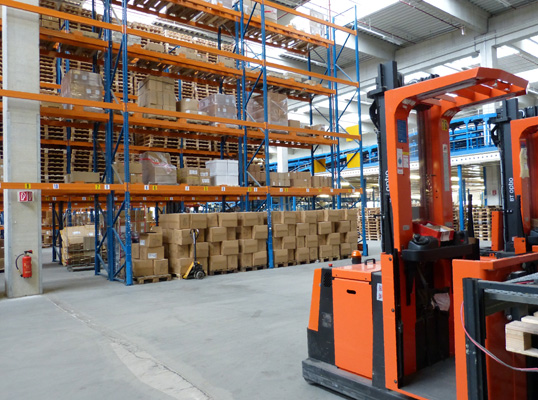Korea focused on growing its manufacturing sector, essentially value addition, while we remained agricultural, and even then, dismally so. How else could we explain the fact we are not yet food secure?
BY SAM KEBONGO
I was in Mombasa earlier this year and rode on the Standard Gauge Railway (SGR). One afternoon while there, my friend and I were strolling around town when we approached this fellow who made and sold sugarcane juice. He peeled and crushed a stick of cane, added a little ginger and made us a wonderful drink there and then.
I kept asking myself – why can’t cane sellers in the countryside, in areas where we have so much sugarcane – do the same? Let’s do the math: Our juice was made from a half the length of sugarcane, which retails for around KSh10. The ginger and the overheads could have cost the seller about another KSh15. These made us juice that we happily paid KSh50 for. His profit for the two cups is KSh25. Say, he sold 50 cups of cane juice a day he would make KSh625 which is KSh3,750 per 6-day week and KSh15,000 per month from cane alone. He also sells other items like snacks. That’s the power of value addition!
Growth disparity
Let’s scale it up. Institute of Economic Affairs (IEA) compared East African economies with South Korea’s from the 1960 to 2017. According to the report, in 1960, the average South Korean earned USD158.24 (KSh15,990) compared to average Kenyan’s USD97.62 (KSh9,864). By 2017, the average income per Kenyan had grown to USD1,507 (KSh152,282) while the equivalent for a South Korean had reached USD29,742.84 (KSh 3 million). A South Korean had moved from being twice as rich as a Kenyan in 1960 to being 20 times wealthier in 2017. Further, South Korea’s total annual income has grown by about 188 times, whereas Kenya’s has only grown 15.45 times.
The above growth disparity can be answered by the cane juice story. Korea focused on growing its manufacturing sector, essentially value addition, while we remained agricultural, and even then, dismally so. How else could we explain the fact that we are not yet food secure? In 1960, manufacturing sectors of South Korea and Kenya were comparable; South Korea’s manufacturing sector made up 11.23 per cent of the economy, whereas Kenya made up 8.71 per cent. By 2017, the contribution of manufacturing to South Korea’s economy had more than doubled to 27.57 per cent, while for Kenya has stagnated around 8 per cent.
The Chinese question
Even as we focus on growing manufacturing, the agricultural sector too needs a restructuring from land use consolidation, mechanisation to adoption of modern techniques. The bottom line must be value addition.
Visitors are often surprised when they find that a good portion of Kenyans are not proud of the SGR. The KSh323 billion project is easily the biggest infrastructure project in Eastern Africa. The problem for cost conscious Kenyans lies therein – it is too expensive and has been built on borrowed money from China. This raises many valid questions, mainly; is SGR good value for money? How will this huge loan amount be repaid?
The Chinese question lingers large over every government borrowing. As recently as July 2018, Paul Wafula a writer for a leading Kenya daily called the project ‘a black hole’. Nancy Kacungira of the British Broadcasting Corporation perhaps gave a more balanced view of this project. In June 2017, she discussed whether Kenya would get value for money from the SGR.
The SGR and National Debt question have become twin issues. The rolling question now is; is Kenya’s debt sustainable? It is right to ask this because in Kenya’s 2018 budget of KSh2.5 trillion, KSh1.59 trillion goes to development projects. Of this, 39.5 per cent (KSh631 billion) is allocated to infrastructure. Kenya is followed by Tanzania at KSh535 billion, then Uganda at KSh308 billion and Rwanda at KSh129 billion. These are relatively large expenditures given the sizes of these economies. The question of debt sustainability has two answers; as Jim McFee of Strathmore University points out, all major world economies have debt to GDP ratio of above 100 per cent compared to Kenya’s 54 per cent. The big question is whether the borrowed money is used correctly. Development expenditure is essentially future investment. Thus, it is incorrect to the point of naivety to fail to consider future returns complete with resultant multiplier effects when evaluating such. The second answer that buttresses the first in the fact that debt is a serious sign of confidence in Kenya and her finances by others who matter.
Connecting trade partners
Is it right to borrow for infrastructure development? A resounding yes. Is infrastructure important for our economic growth? To answer that better, infrastructure must be seen as an enabler. Kenya’s four top trading partners include Uganda, Tanzania, Rwanda, and Burundi; all our neighbors. It cannot be gainsaid that good roads, rails, internet, phone connections within the country and with these countries will go a long way in increasing our competitiveness with these trading partners.
Is Kenya’s SGR viable? The Cabinet Secretary Transport, infrastructure, Housing and Urban Development James Macharia said that SGR is viable investment for the country and is already making profit. Well I rode on it and I was comfortably able to reach early thus work some more. It has boosted local tourism between Nairobi and Mombasa and reduced cost of time of freight. Suffice to conclude SGR can spur economic growth.
Sam Kebongo is an entrepreneur. Email: sam.kebongo@gmail.com















